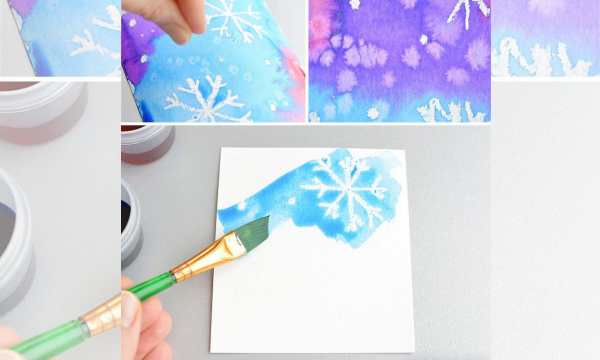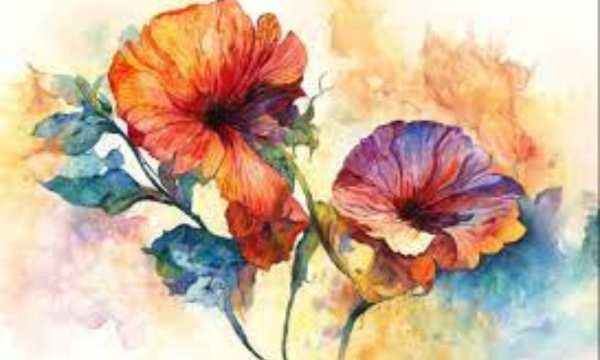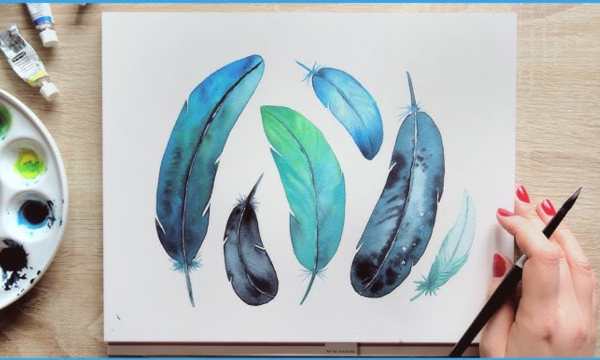Watercolor is a fascinating art form that allows artists to express their creativity through the interaction of paint and water on paper.
Ad
Of the various techniques of watercolor painting, wet-on-wet is a particularly fascinating and liberating method. In this exploration, we delve into the world of wet-on-wet watercolor, understanding its principles, mastering its techniques, and unlocking its potential to create beautiful, flowing works of art.
1. Learn More About Wet-on-wet Watercolor:
Wet on wet, also called ‘alla prima’ or ‘direct painting’, is a technique in which wet paint is applied to a wet surface. Unlike the traditional wet-on-dry method, which applies paint to a dry surface, the wet-on-wet method encourages colors to mix and spread spontaneously and unpredictably.
Ad
The key to successful wet-on-wet watercolor painting is the timing and control of water and paint. Before being painted, the paper is saturated with water, creating a receptive surface in which colors can flow and blend seamlessly.
2. Materials Required:
Before you begin your wet-on-wet watercolor journey, gather the necessary materials:
Ad
- Watercolor paper: Choose a heavy, high-quality paper that can withstand moisture without warping.
- Watercolor paint: Choose professional paints with high pigment concentrations for vibrant colors.
- Brushes: There are a variety of brushes, including large mop brushes for covering large areas and smaller round brushes for details.
- Water containers: Use two containers: one to clean the brush and one to moisten the paper.
- Palette: A mixing palette with holes for diluting and mixing colors.
- Paper towels: Keep them in a handy place to absorb excess water and paint.
3. Prepare the Paper:
Start by attaching the watercolor paper to a sturdy surface using painter’s tape. Stretch it if necessary to prevent bending. Use a clean brush or spray bottle to evenly moisten the entire surface of the paper. The goal is to saturate the paper without creating puddles. This step prepares the surface for paint, allowing colors to flow and mix easily.
4. Select Color and Blend:
Wet-on-wet watercolor painting is a great technique for creating harmonious color transitions. Before you start painting, you need to choose a color palette that suits your artistic vision. Mix the desired colors on the palette and think about how they react to the wet paper.
Try using similar or complementary color schemes to achieve different effects. Keep in mind that wet on wet carries a degree of unpredictability, so be open to unexpected color combinations that may arise during the painting process.
5. Application Technology:
Now comes the exciting part: applying the paint to the wet surface. Use a large mop brush to cover important areas with thick strokes. You can also use a round brush for more detailed work. Experiment with different strokes, such as washes, glazes, and splatters, to explore the variety of textures and effects that wet-on-wet can provide.
To create soft transitions between colors, you need to work quickly and confidently. Allow the watercolor paint to blend naturally on the wet paper. Slant the surface to direct the flow of color or add additional water to aid distribution.
6. Layering and Construction Depth:
One of the benefits of wet-on-wet watercolor is the ability to seamlessly layer and build depth. When the first wash is dry, add another coat of wet paint to enhance the color or add a new element to your composition. The wet surface creates smooth transitions between the layers, giving your artwork a rich and dynamic look.
Try layering techniques by applying dark colors over lighter colors or vice versa. This process adds complexity to your painting, creating depth and visual interest. Take the time to observe how the paint interacts, and don’t be afraid to let the colors mix organically.
7. Common Challenges and Solutions:
Working with wet-on-wet watercolors can be difficult, but overcoming these difficulties is part of the learning process. Here are some common problems and solutions:
- Wrinkled paper: To prevent watercolor paper from wrinkling, use heavy, high-quality paper and unfold it before painting.
- Unwanted flowers: To prevent unwanted flowers, check the amount of water on the paper and blot if necessary.
- Muddy colors: Be careful not to mix too many colors on the palette and don’t apply the paint too hard to the paper to prevent the paper from becoming cloudy.
- Uneven drying: To dry the paper evenly and prevent puddles, tilt it or use a hair dryer on low heat.
Conclusion
Exploring wet-on-wet watercolor is a fascinating journey that encourages artists to spontaneously play with color and discover the expressive power of this dynamic technique. As you navigate the world of wet on wet, you can play, learn, and discover the magic that happens when water and paint dance together on a wet canvas. Wet-on-wet watercolor gives you great creative freedom, so no matter how much experience you have, each painting is a unique and vibrant expression of your artistic vision. Get your brushes ready, dive into the world of wet on wet, and let the colors flow!
FAQs
1. This is a wet-on-wet watercolor painting. what is it?
When you use wet-on-wet watercolor (also called ‘alla prima’ or ‘direct painting’), you apply wet paint to a wet surface. This method allows the colors to easily blend on their own, giving the effect a fluid, unpredictable feel.
2. What should I paint while the watercolor is still wet?
Professional watercolor paints, a variety of brushes (such as mops and round brushes), a water container, a palette, and paper towels are some of the things you’ll need to get started.
3. How to prepare a paper for wet-on-wet painting?
Masking tape can be used to stick watercolor paper to a solid surface. Use a clean brush or spray bottle to evenly moisten the paper, taking care not to create puddles. The surface is now ready for the still-wet paint.
4. Can any color scheme be used with wet-on-wet watercolor painting?
Yes, you can choose any color scheme that suits your artistic vision. Try using color schemes that are similar or opposite to get different results. Mix the colors on the spot wet on wet, so don’t be afraid to use colors that wouldn’t normally go together.
5. What are the different ways to use wet-on-wet watercolor?
A large mop brush is suitable for large movements, while a round brush is suitable for smaller movements. Experiment with different textures by using washes, glazes, and splashes. Tilt the paper to move the color and add more water to help spread the color.
6. How do I add color depth and layers to wet-on-wet watercolor?
When the first coat of paint is dry, apply another coat of wet paint to make the color pop or add a new element. The wet surface allows the layers to easily blend into each other, giving the painting a rich, vibrant look.


